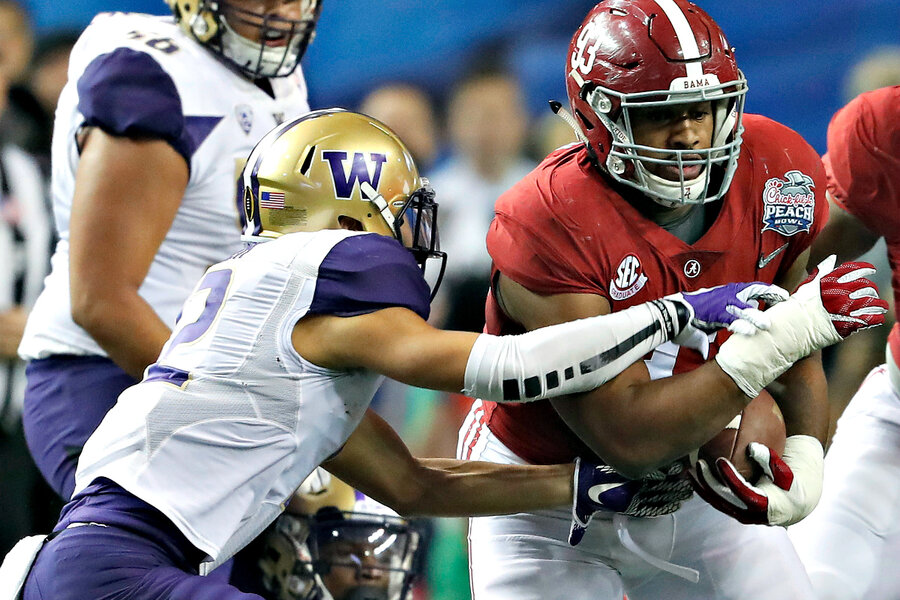If college football is so popular, where are the fans?
Loading...
Fans in the stands at the Allstate Sugar Bowl in New Orleans Jan. 2 might have wondered where everybody went.
The announced crowd of 54,077 fell far short of the seating capacity of the cavernous Mercedes-Benz Superdome, which holds more than 76,000. Vast swaths of seats sat empty. The attendance figure was the lowest for the Sugar Bowl since 1939.
But it was hardly alone. The Camping World Independence Bowl, held each year in Shreveport, La., brought just under 29,000 fans through its turnstiles, its worst attendance since 1988. The Goodyear Cotton Bowl Classic in Arlington, Texas, drew a respectable 59,615, but that was the lowest number since 1998. The TaxSlayer Bowl in Jacksonville, Fla., counted 43,102 occupied seats, the fewest for that event since 1958.
And it wasn’t just bowl games. For the sixth consecutive season attendance at regular season major college football games dropped as well, down about 7 percent since its peak in 2008, according to an analysis by CBS Sports.
Declining interest in college football would come as a big surprise to fans of the University of Alabama and Clemson University, whose teams will clash in a sold-out, nationally televised championship game Jan. 9. But the national championship playoffs themselves, which involve only three of the more than 40 bowl games played from mid-December into January (two semifinal games and a championship game), may be part of the problem: They turn the other bowl games into essentially meaningless exhibitions, except to their most ardent fans.
Many traditional football powerhouse schools have seen no decline in attendance. But other teams in major conferences have. Attendance at University of Missouri games was down 20 percent compared with 2015, for example; at Minnesota, it was down 16 percent; and at Kentucky and Stanford 12 percent.
What’s happening? It could be the Revenge of the Couch Potato: Large-screen, high-definition TVs mean games can been seen with more comfort and greater clarity from a living room sofa than a seat in the stands.
Or have colleges become slaves to the TV networks? To please schedulers games start as early as 11 a.m. or may be played on a weeknight, hardly convenient to attend in person. Could the problem be price gouging? High ticket prices can start fans wondering if soaking in the pageantry at their local ivy-covered stadium is worth the cost.
And that doesn’t include other possible turnoffs, such as the persistent parade of scandals resulting from misbehavior by players off the field, or concerns about players diagnosed with concussions or who incur other serious injuries while playing.
A slow but steady slippage in live attendance doesn’t mean a precipitous slide is ahead for college football. Lucrative television broadcast contracts are a much more important source of revenue; strong TV ratings, which haven’t seen a similar decline, not ticket sales drive those contracts.
But fewer fans interested in attending games in person ought to worry universities. Stands are usually filled by current students and the most loyal and passionate alumni, groups who are expected to support the institution financially now and in the future.
Finding out why they’re staying home – and addressing those problems – would be in the best interest of one of America’s favorite sports.







